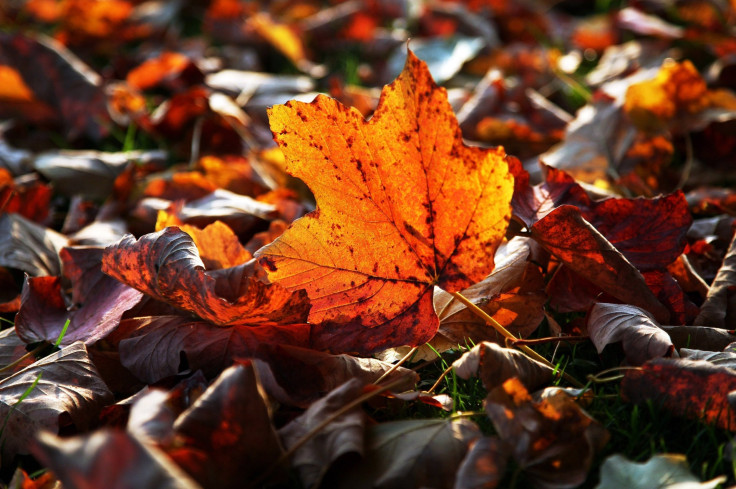Fall 2018: Facts To Know As Autumn Comes Around

The season of fall begins with the autumnal equinox each year in the northern hemisphere. This year, the equinox falls on Saturday, Sept. 22.
The equinox happens twice a year when the day and night are almost the same lengths, approximately 12 hours each. It is when the center of the sun is positioned directly above the equator. Autumn in the southern hemisphere occurs during the months of March, April, and May.
Autumn is one of the four seasons which occur through the year. It comes right after summer and before winter. It is the time when the temperature turns cooler after the summer heat, and leaves start to change color and shed from branches creating a landscape of colorful foliage.
Here are 10 interesting and some lesser-known facts about autumn:
- Some of the unique colors of fall leaves, actually exist all year long. Leaves can be yellow, orange or variations of the two, but the presence of chlorophyll pigment in spring and summer give it the green color. As summer ends, the temperature dips and daylight also decreases. This causes the green pigment to break down, bringing out the other pigments in the leaves.
- But this is not true in the case of red and purple leaves. They get the colors due to the presence of sugars from saps already present in them.
- The terms "autumn" and the commonly used "fall" were coined in Britain. During the 1300s, the season was called “harvest” as it was the time of the year ripe sweet potatoes, squash and pumpkins were picked. Then the word "autumn" appeared and quickly gained popularity. It was only in the 1600s, the term “fall” came into the scene. “Autumn” continued to remain popular in England, but by the mid-1800s Americans mostly referred to the season as “fall.”
- According to NASA, autumn is “aurora season." Autumn produces twice the average number of geomagnetic storms a year. This combined with the longer nights make the perfect condition to watch and experience the northern lights.
- People who live closest to the equator never experience autumn, a report on Richmond Times Dispatch said. The temperature remains consistently warm around the center of the planet.
- Autumn’s beginning is associated with the time when Persephone, the daughter of Demeter, was abducted by Hades, the god-king of the underworld, according to Greek legends. As a result, Demeter, the goddess of the harvest, grew troubled, and the earth became cold and barren. Spring coincides with the return of Persephone, rejuvenating Demeter’s spirit and the earth with it.
- According to a report on Reader’s Digest, sex drive in both men and women spike in fall. Testosterone levels in both increase and as a result, the opposite sex seems more attractive than usual in fall.
- A study by the University of Chicago of 1,500 centenarians found that fall babies, especially those born between September and November have a higher chance of living till they are 100.
- Fall tourism brings in a lot of money, especially in New England, and is, therefore, considered really good for the economy. “Leaf peeping” is an extremely popular activity where people travel to take a closer look at the colorful foliage, CNN reported. New England earns over $3 billion every year during this time, according to an AP report.
- A YouGov survey found that fall was the favorite season for 29 percent of Americans.
© Copyright IBTimes 2024. All rights reserved.





















